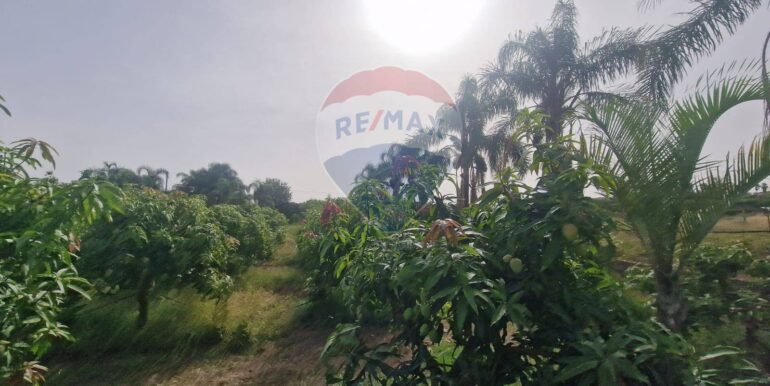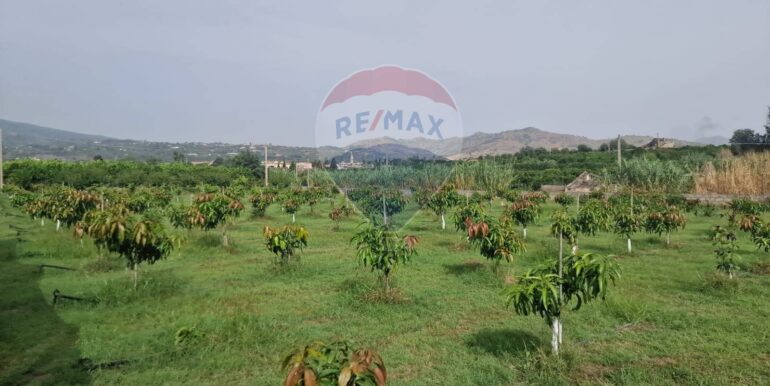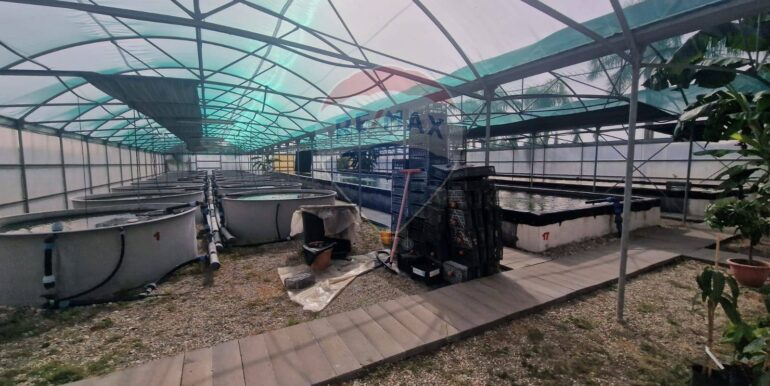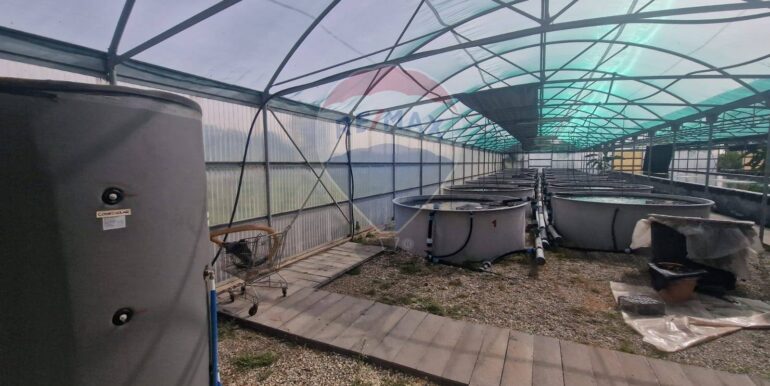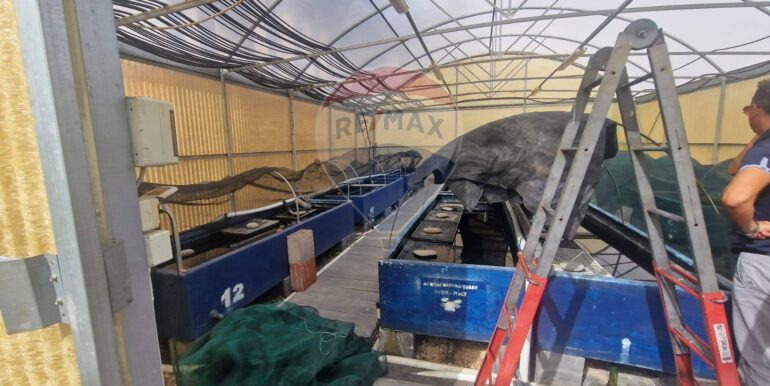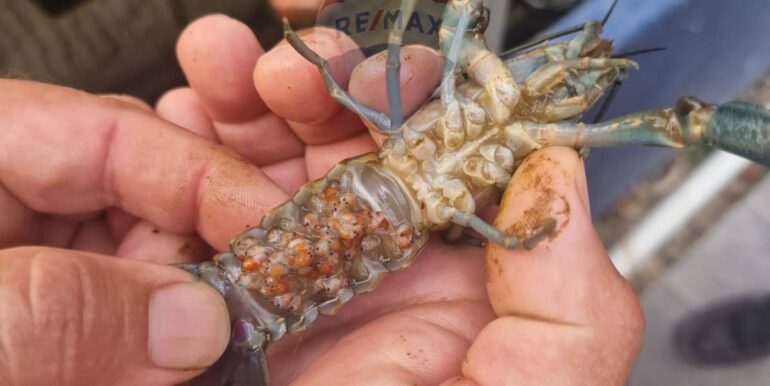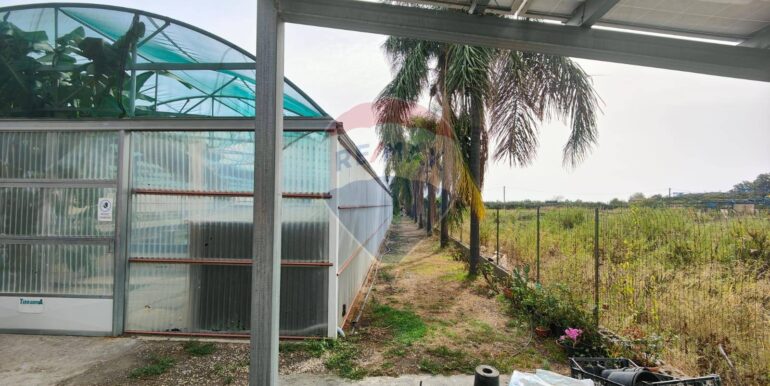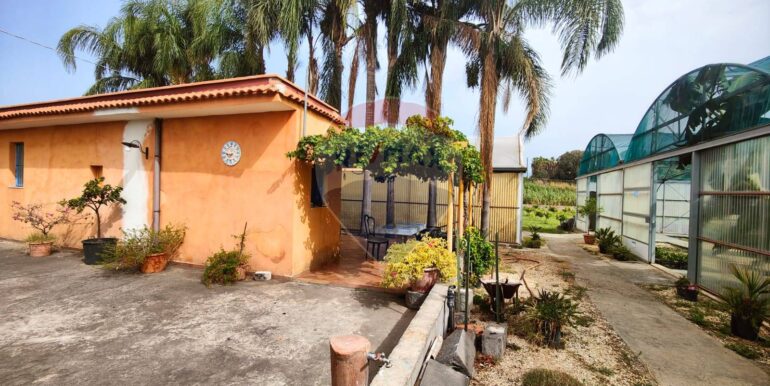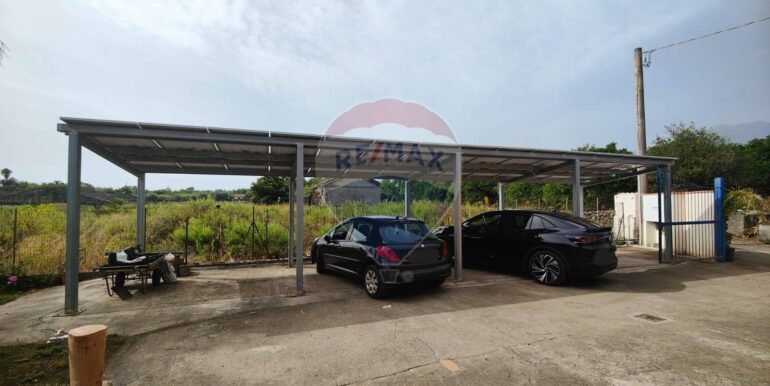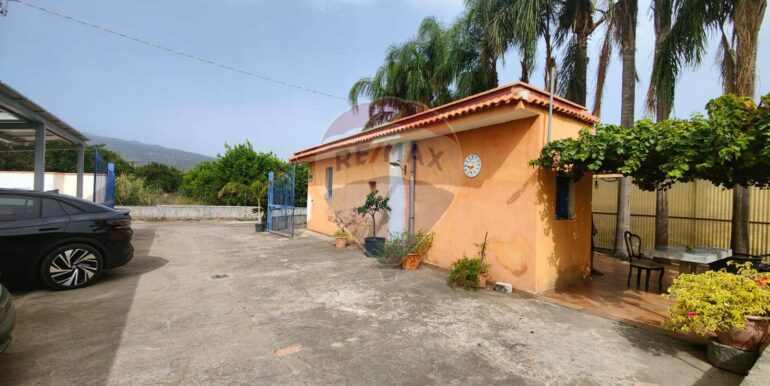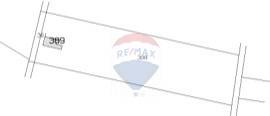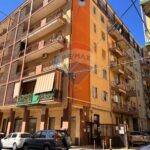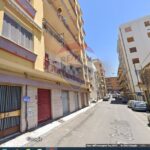Vendita 490.000,00€ - Attività Commerciale
Classe energetica: G – EPgl,nren: 3,51 kWh/m² – 1. Descrizione attività :
Il presente impianto di acquacoltura fa parte di un protocollo dattività per un impianto pilota, a carattere sperimentale-dimostrativo, unico in Italia, per lallevamento intensivo e la riproduzione controllata dello Yabby, che il IX° Servizio dellAssessorato Agricoltura e Foreste della Regione Siciliana vuole realizzare nellambito del Progetto Acquacoltura approvato e finanziato con D.D.S. n°842 del 07/09/2005. Limpianto di acquicoltura per lallevamento del crostaceo yabby sorge in di attività rurali geograficamente a sud-est del centro edificato di Fiumefreddo di Sicilia in Contrada Vignagrande, una ampia zona agricola e Fiumefreddo.Limpianto si compone di tre corpi, denominati corpo A, corpo B e corpo C, rispettivamente la sede uffici e servizi, il settore riproduzione e nursery ed il settore ingrasso.
Il corpo A, come sopra accennato, ospiterà sia i locali adibiti ad ufficio di amministrazione, che quelli ad uso igienico e spogliatoio per gli addetti alle attività lavorative; in particolare questi ultimi sono dotati di due servizi igienici separati per sesso di cui uno realizzato per persone diversamente abili; detti locali saranno rifiniti con piastrelle in ceramica a pavimento e fino ad una altezza di 2 metri per le pareti i e sono dotati degli idonei componenti sanitari wc, lavabo e doccia a pavimento.
Gli ambienti ufficio, arredati con una scrivania ed accessori, avranno superfici aero illuminanti pari o superiori ad 1/8 della superficie in pianta, come da Tabella A allegata.
Allinterno dei corpi B e C, come anzidetto si svolge lattività di allevamento; detti corpi sono realizzati con struttura portante con montanti ed arcate in tubi di acciaio zincato diametro 60mm, tra loro bullonate, rivestita con telo trasparente di PVC, tipicamente come le strutture a tunnel per serre.
In siffatte strutture lilluminazione naturale avviene attraverso la trasparenza del telo di copertura delle stesse, mentre laerazione sarà garantita sia dalle aperture di ingresso che dalla apertura laterale mediante sollevamento del telone trasparente in PVC per tutto il perimetro dei corpi stessi; ciò garantirà il rispetto e superamento del rapporto di 1/8 della superficie in pianta.
Nel corpo B oltre alla vasca della cosiddetta riproduzione dello yabby, è destinato ad ambiente di riproduzione ed allevamento larvale, al suo interno vi si trovano disposti n°12 vasca in vetroresina delle dimensioni di ml. 1,00 x ml. 3,00 in vetroresina.
Nel corpo C si trovano n°16 vasche disposte in batteria in vetroresina del diametro di 3,00 ml, e di due vasche in muratura delle dimensioni di 32,00 x 5,00 ml; in queste vasche avviene lallevamento vero e proprio sino alla completa crescita del crostaceo yabby, idonea per la sua commercializzazione.
Per quanto riguarda il rapporto lilluminazione dei corpi B e C essa sarà del tipo naturale con superficie pari a tutta la loro estensione in quanto la struttura di tipo a serra sarà, come detto, ricoperta di rete oscurante per limitare leccesso di luce e calore. Sarà prevista una idonea illuminazione artificiale, tramite lapplicazione di un numero adeguato di plafoniere per tubi fluorescenti di tipo stagno con grado di protezione IP65, posizionate sopra le vasche per la loro lunghezza; detti corpi, che potranno utilizzarsi a settori, garantiranno un adeguato livello di illuminamento di almeno 200 lux sulle vasche e nei camminamenti vicini, durante le ore serali di attività.
2. Ciclo di lavorazione
Il lavoro che concerne lattività nel corpi B e C, consiste essenzialmente da un lato a fornire le giuste quantità di cibo nelle vasche, che viene posizionato una volta al giorno al centro di ognuna di esse e che è composto da un impasto (poltiglia) di sostanze vegetali miscelate e conservato in apposite celle frigorifere posizionate nel corpo B; dallaltro a selezionare gli individui per dimensione e taglia, poiché quelli adulti e più grossi, prevalendo su quelli più piccoli, devono necessariamente essere suddivisi e spostati in vasche diverse.
Altre attività previste sono: la pulizia delle vasche, che avviene mediante idropulitrice ed attrezzi manuali e che deve essere effettuata circa una volta ogni quattro mesi, prevedendo il totale svuotamento delle stesse per singoli settori, di cui le vasche si compongono, ed in modo alternato per due singole vasche alla volta, in modo tale da non interrompere il ciclo di produzione;
altresì verranno effettuati periodici controlli e pulizie dei filtri meccanici e della vasca di fitodepurazione per evitarne lintasamento.
Per quanto attiene il controllo delle acque dal punto di vista chimico e biologico esso verrà effettuato dallUniversità degli Studi di Palermo.
3. Ciclo e smaltimento delle acque Tale impianto di acquicoltura sarà sperimentato come impianto a ciclo misto riguardo allutilizzo delle acque, che saranno fornite da un esistente pozzo artesiano ad uso agricolo regolarmente denunciato allUfficio del Genio Civile di Catania giusta domanda di concessione preferenziale prot. 22012 del 21/06/2006; infatti considerata la esigua estensione e la contenuta portata di acqua necessaria allesercizio di detto impianto, circa 0,5 l/s per vasca, sarà possibile utilizzare a ciclo aperto lacqua del pozzo per fornire la portata richiesta durante le ore diurne e prevalentemente nel periodo estivo, portata che si disperderà in fitodepurazione attraverso appositi filtri meccanici, come più avanti specificato; mentre nelle ore serali e notturne, nelle stagioni intermedie ed invernali e nelle giornate non soleggiate non sarà effettuato lapporto di acqua primaria dal pozzo, ma verrà utilizzata a ciclo chiuso lacqua esistente nelle vasche; un idoneo impianto di ricircolo effettuerà la movimentazione dellacqua attraverso il filtro meccanico e un successivo filtro biologico ed inoltre sarà immessa aria mediante insufflatori per larricchimento di ossigeno.
Più specificatamente il funzionamento dellimpianto a ciclo misto suddetto è così realizzato: nel ciclo aperto lacqua estratta dal pozzo artesiano viene immessa in appositi serbatoi di stoccaggio, almeno 20m³, al fine di stabilizzarla termicamente e da qui pompata direttamente nelle vasche di ingrasso, con portata di 3l/s, alla fine delle quali lacqua sarà condotta in apposito filtro meccanico e quindi in fitodepurazione per essere poi smaltita nel vicino torrente delle forche; mentre nel caso di ciclo chiuso, lacqua depurata dal filtro meccanico viene raccolta in una successiva vasca e da qui pompata nei precedenti serbatoi di stoccaggio, che in questo caso alimenteranno in uscita un filtro biologico da cui lacqua sarà immessa in circolo nelle vasche.
Per quanto riguarda limpianto di riproduzione e nursery presenti nel corpo B, essisaranno eserciti a ciclo chiuso per un migliore e necessario controllo della temperatura dellacqua utilizzata per il ciclo riproduttivo, con le stesse modalità sopra descritte.
Con lo stesso scopo ed ad integrazione del progetto di cui sopra sfruttando lacqua di ricircolo in maniera sostenibile ha realizzato una piantagione di mango attigua allazienda estesa su mq. 3253 di terreno pianeggiante costituita da nr.580 piante delle seguenti qualità: Kensigton, Pride,Kent, tommy,naomy.
Un’attività che è unica non solo in Italia ma persino in Europa è ricercatissima e ha una capacità di sviluppo enorme con una proiezione di guadagni veramente rilevante
——————————-
1. Activity description:
The present aquaculture plant is part of an activity protocol for a pilot plant, of an experimental-demonstrative nature, unique in Italy, for the intensive breeding and controlled reproduction of the Yabby, which the IX Service of the Department of Agriculture and Forests of the Sicilian Region wants to carry out as part of the “Aquaculture Project” approved and financed with DDS n°842 of 07/09/2005. The aquaculture plant for the breeding of the “yabby” crustacean is located in rural activities geographically south-east of the built-up center of Fiumefreddo di Sicilia in Contrada Vignagrande, a large agricultural area and Fiumefreddo. The plant consists of three bodies , called body “A”, body “B” and body “C”, respectively the office and service headquarters, the reproduction and nursery sector and the fattening sector.
Body “A”, as mentioned above, will host both the rooms used as an administration office and those for hygienic use and changing rooms for those involved in work activities; in particular, the latter are equipped with two toilets separated by sex, one of which is designed for disabled people; these rooms will be finished with ceramic tiles on the floor and up to a height of 2 meters for the walls and are equipped with the suitable sanitary components, toilet, sink and floor shower.
The office environments, furnished with a desk and accessories, will have air-lighting surfaces equal to or greater than 1/8 of the plan surface, as per the attached “Table A”.
As mentioned above, breeding activities take place inside buildings B and C; these bodies are made of a load-bearing structure with uprights and arches in 60mm diameter galvanized steel tubes, bolted together, covered with transparent PVC sheeting, typically like tunnel structures for greenhouses.
In such structures, natural lighting occurs through the transparency of the covering sheet of the same, while ventilation will be guaranteed both by the entrance openings and by the lateral opening by lifting the transparent PVC sheet along the entire perimeter of the bodies themselves; this will guarantee compliance with and exceeding the ratio of 1/8 of the plan surface.
In body “B” in addition to the so-called “yabby reproduction” tank, it is intended for a reproduction and larval breeding environment. Inside there are 12 fiberglass tanks measuring 100ml. 1.00 x ml. 3.00 in fibreglass.
In body “C” there are 16 tanks arranged in a fiberglass battery with a diameter of 3.00 ml, and two masonry tanks measuring 32.00 x 5.00 ml; The actual breeding takes place in these tanks until the “yabby” crustacean is fully grown, suitable for marketing.
As regards the relationship, the lighting of bodies B and C will be of the natural type with a surface equal to their entire extension as the greenhouse-type structure will, as mentioned, be covered with darkening net to limit excess light and heat. Suitable artificial lighting will be provided, through the application of an adequate number of ceiling lights for watertight fluorescent tubes with IP65 protection rating, positioned above the tanks along their length; these bodies, which can be used in sectors, will guarantee an adequate level of illumination of at least 200 lux on the pools and in the nearby walkways, during the evening hours of activity.
2. Processing cycle
The work that concerns the activity in the “B” and “C” bodies essentially consists on the one hand in providing the right quantities of food in the tanks, which is positioned once a day in the center of each of them and which is composed of a mixture (mush) of vegetal substances mixed and stored in special refrigeration cells positioned in body “B”; on the other to select individuals by size and size, since the adult and larger ones, prevailing over the smaller ones, must necessarily be divided and moved to different tanks.
Other planned activities are: cleaning of the tanks, which takes place using a high-pressure washer and manual tools and which must be carried out approximately once every four months, involving the total emptying of the same for individual sectors, of which the tanks are made up, and in an alternating manner for two single tanks at a time, so as not to interrupt the production cycle;
furthermore, periodic checks and cleaning of the mechanical filters and the phytopurification tank will be carried out to avoid clogging.
As regards the control of water from a chemical and biological point of view, it will be carried out by the University of Palermo.
3. Water cycle and disposal This aquaculture plant will be tested as a mixed cycle plant with regard to the use of water, which will be supplied by an existing artesian well for agricultural use duly reported to the Civil Engineering Office of Catania upon request for concession preferential protection 22012 of 06/21/2006; in fact, considering the small extension and the limited flow rate of water necessary for the operation of this system, approximately 0.5 l/s per tank, it will be possible to use the water from the well in an open cycle to provide the required flow rate during daylight hours and mainly in the summer period, flow which will be dispersed in phytopurification through special mechanical filters, as specified later; while in the evening and night hours, in the intermediate and winter seasons and on non-sunny days, primary water will not be supplied from the well, but the water existing in the tanks will be used in a closed cycle; a suitable recirculation system will move the water through the mechanical filter and a subsequent biological filter and air will also be introduced through insufflators for oxygen enrichment.
More specifically, the operation of the aforementioned mixed cycle system is carried out as follows: in the open cycle the water extracted from the artesian well is introduced into special storage tanks, at least 20m³, in order to stabilize it thermally and from here pumped directly into the fattening tanks , with a flow rate of 3l/s, at the end of which the water will be conducted into a special mechanical filter and then into phytopurification to be then disposed of in the nearby Forche torrent; while in the case of a closed cycle, the water purified by the mechanical filter is collected in a subsequent tank and from here pumped into the previous storage tanks, which in this case will feed a biological filter at the outlet from which the water will be put into circulation in the tubs.
As regards the reproduction system and nursery present in block “B”, they will be operated in a closed cycle for a better and necessary control of the temperature of the water used for the reproductive cycle, with the same methods described above.
With the same purpose and to integrate the above project by exploiting the recirculation water in a sustainable way, he created a mango plantation adjacent to the company covering an area of approx. 3253 of flat land made up of 580 plants of the following qualities: Kensington, Pride, Kent, Tommy, Naomi.
An activity that is unique not only in Italy but even in Europe, it is highly sought after and has an enormous development capacity with a truly significant earnings projection


